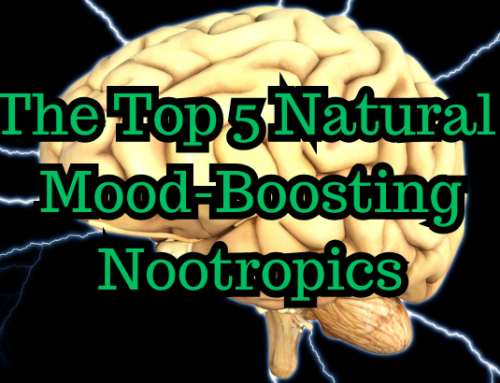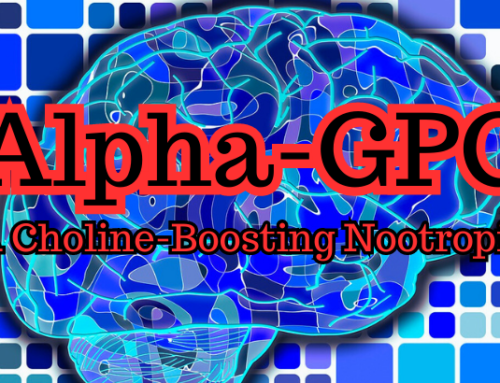Have you ever heard of kratom? If you haven't, you're missing out on a powerful plant that has tons of mind-and-mood-boosting properties. And if you have, you've probably never heard about the nootropic benefits of kratom before.
While it's usually not thought of as a nootropic, many users find that kratom has several nootropic properties. Improved mood, increased motivation and focus, reduced anxiety, and overall cognitive enhancement are just some of the benefits that kratom users report.
In this post, we're gonna look at the benefits of this amazing plant, typical dosages, potential negative effects, where to buy, and the controversy surrounding its legal status. First, though, let's take an in-depth look at what kratom is.
What is kratom?
Kratom (usually pronounced krA-tum) is a plant that's native to southeast Asia.1 The scientific name for this evergreen tree is mitragyna speciosa and it belongs to the same family as the coffee plant.2 It has been used all over the world for centuries by many different cultures. Most commonly, kratom is used for its mood-boosting and anxiety-reducing properties, its ability to significantly help with opioid withdrawal, as a mild stimulant, and to help with chronic pain.3
It's only been over the past 10-15 years or so that kratom has become popular in the United States. Thousands and thousands of Americans use this amazing plant to manage chronic pain, decrease anxiety, improve mood, get off dangerous prescription and illicit drugs, and for its ability to provide an energy boost.4
Kratom can be consumed in a variety of ways. Some of the more common ways it's consumed are in capsules, as kratom tea, or in powder form. The plant has a very strong taste, one that many people find unpleasant. Because of this, the powder is rarely consumed on its on. Kratom powder is often mixed into a drink to mask the taste. Orange juice, Sunny Delight, and eggnog are among some of the most popular choices.
For most people, kratom has a mildly stimulating, mood-boosting and anxiety-reducing effect, on par with a tall, strong cup of coffee. But for others – especially those with chronic pain or problems with prescription and illegal opioids – it has been an absolute game changer. For many, kratom has been a “miracle plant.” It has certainly made a huge difference in my life. Kratom has allowed me to manage the chronic pain associated with the autoimmune disease I have without opioids and dramatically increased my productivity when I first discovered it over a decade ago.
Kratom for chronic pain and opioid dependence
Kratom works – at least in part – by binding with some of the same receptors in the brain that prescription painkillers and our own bodies' natural painkillers, endorphins, bind to.5 But kratom binds to them in a slightly different (yet highly significant) way than opioids do. While things like heroin, morphine, oxycodone (Percocet), hydrocodone (Vicodin), and methadone are full opioid agonists, mitragynine (one of the active alkaloids in kratom) is only a partial agonist.6

Kratom Leaf (Mitragyna Speciosa)
To put it simply, kratom affects the brain in ways that are similar to prescription painkillers, but it does so differently and to a much lesser degree. As a partial opioid agonist, kratom doesn't cause the extreme euphoria, severe respiratory depression (that can results in death), or other serious side effects that prescription and illegal opioids are known for.7 It does, however, still have all the pain-relieving, mood-boosting, and anxiety-reducing effects of full agonists.
Unlike heroin and prescription painkillers, not a single death has been reported from kratom use alone.8 Prescription painkillers are responsible for thousands of deaths every year. In 2022 alone, more than 81,000 Americans died from opioid overdoses, the majority of them from prescription painkillers.9 That averages out to roughly 222 deaths per day. Kratom, by itself, has caused zero deaths, total.
Because of all this, kratom has helped thousands of people to get off heroin and prescription painkillers. It's been shown to significantly reduce or eliminate withdrawal and drastically reduce cravings, but with far fewer side effects than things like methadone or buprenorphine (Suboxone).10
Kratom as a nootropic
 In recent years, some people have been using kratom as a nootropic.11 At lower doses (1-3 grams), most users find that kratom has a stimulating effect. Higher doses usually work better for pain management and opioid dependence, but lower doses often increase energy, motivation, and focus, reduce anxiety, and improve mood.
In recent years, some people have been using kratom as a nootropic.11 At lower doses (1-3 grams), most users find that kratom has a stimulating effect. Higher doses usually work better for pain management and opioid dependence, but lower doses often increase energy, motivation, and focus, reduce anxiety, and improve mood.
Kratom has actually been used as a nootropic for centuries in southeast Asia.12 Farmers would chew on the leaves to reduce fatigue and increase productivity. Sound familiar? Those are nootropic qualities.
Fast forward to more modern times and kratom is being used all around the world for its ability to increase productivity and motivation, reduce anxiety and fatigue, and improve mood. When used only a few times a week, it is generally considered to be safe and makes a great addition to any nootropic arsenal.
Kratom benefits
- Improved mood
- Increased energy
- Increased motivation
- Reduced anxiety
- Reduced fatigue
- Increased productivity
- Strengthened immune system13
- Reduction in chronic pain3
- Manage opioid dependence/reduce cravings1415
Potential kratom negative effects
![]()
As you can see, kratom is a wonderful plant with tons of potential benefits. But like anything, it also comes with some potential negative effects.
The most important thing to know before using kratom is that, with prolonged daily use, tolerance and dependence can occur over time. There are numerous reports of people taking multiple doses of kratom everyday for months and having no negative effects or withdrawal. However, some people experience mild withdrawal, comparable to caffeine withdrawal, when they stop taking kratom after months of daily use.
There is an obvious way to avoid this: don't take kratom every day. Most people find that kratom works best when taken no more than a few times per week. This prevents your body and brain from getting used to it (tolerance), keeping it effective and eliminating the possibility of experiencing any withdrawal symptoms.
Some people who have a history of substance abuse and addiction may have trouble controlling their kratom use. If that's you and you've been clean and sober for a long time, you might want to stay away from kratom. However, there are thousands of reports of people trading their active addictions from prescription-and-illegal drugs to kratom – and very happily.
Most people who take kratom do not experience any serious unwanted effects. However, some people have experienced the following: nausea, upset stomach, insomnia, anxiety, dizziness, loss of appetite, constipation, and itching.3
Kratom dosage
![]() As stated above, it's a good idea to only use kratom a few times a week at most. Not only will this help you avoid tolerance and dependence issues, it will ensure that kratom stays effective for you. Many people report a reduction in effectiveness with frequent use.
As stated above, it's a good idea to only use kratom a few times a week at most. Not only will this help you avoid tolerance and dependence issues, it will ensure that kratom stays effective for you. Many people report a reduction in effectiveness with frequent use.
The exception to this is if you're using kratom for pain management or to get off a prescription-or-illegal opioid. If you're using it for one of these reasons, then kratom is usually taken 3-5 times a day, with 3-6 hours between doses. But for nootropic purposes, kratom should be taken no more than a few times a week.
A good place to start for most people is around 2 grams of kratom powder.16 For most types of kratom, this would be a little less than 1 teaspoon.17 Many users find that this dose provides all the benefits mentioned above and never need to increase it.
Others find that they need a higher dose to notice any effects. If you don't achieve the desired results with 2 grams, try increasing the dose by 1 gram each time until you experience the benefits you're looking for.
Some users take very high doses of kratom (10+ grams per dose), but the vast majority of people who use it take anywhere from 2-5 grams per dose. Like most other substances, the more you increase your dosage, the higher the odds of experiencing any unwanted effects.

Kratom capsules
If you decide to try kratom, you'll notice that it comes in different strains: red, white, and green. Different colored strains are said to have slightly different feels to them, just like different strains of cannabis (sativa, indica) and other medicinal plants do. Though all strains of kratom will provide the same general benefits, white strains are said to be the most stimulating, red are the most sedating and best for pain relief, and green strains are somewhere in the middle.
In my opinion, the difference in effects from one strain to the next is barely noticeable. Many people, however, find that there is a significant difference between them. You'll have to try a few and see for yourself.
As always, it's a good idea to consult a licensed healthcare professional before starting any new drugs, supplements, exercise programs, or behavioral routines, especially if you are taking any prescription medications. Most doctors don't know what kratom is, so you may have to educate yours a bit. The References section at the bottom of the page is a good place to start.
Kratom controversy
You can clearly see that kratom is an awesome plant with a wide variety of benefits. And it has saved countless lives by providing a much-safer alternative to illegal opioids and prescription painkillers. Personally, I absolutely love kratom and so do the thousands of other Americans it's helped. But you know who doesn't love kratom? The pharmaceutical industry.
Drug companies hate kratom because it is taking money out of their greedy pockets. Kratom is unquestionably safer than prescription opioids and thousands of people have used it to get off these potentially deadly painkillers. That's money that the drugs companies aren't getting and they're not happy about it.
So, the drug companies did what they do best: lobbied the government (indirectly giving them a ridiculous amount of money), asking them to make kratom illegal.18 On August 31, 2016, the Drug Enforcement Administration (DEA) announced that it was going to ban kratom, making it a schedule I substance (same as heroin, cocaine, and crack).19
We may have been fooled in the past. But to most Americans, it's no secret that the War on Drugs has been an absolute failure and the DEA is largely controlled by the pharmaceutical industry.20 They've become a joke – a remnant of a failed war that's destroyed countless lives. The DEA is the same agency that insists cannabis has no medical value whatsoever.21 It's hard to take them seriously and it's obvious that they're nothing more than a puppet for big pharma, the prison industry, and other interests. And I'm no conspiracy theorist: it's all been documented for years.

Wild kratom plant
When I said that thousands of lives have been positively affected by kratom, I wasn't kidding. Within a week of the DEA's announcement to ban kratom, a petition to keep it legal gained more than 100,000 signatures.22 They were expecting the ban to go largely unnoticed – but it didn't. After massive public outcry, the DEA canceled their intent to ban kratom – for now.
As of right now, kratom is still legal in the United States. However, drug companies are now lobbying both the DEA and the FDA trying to get it banned. Kratom supporters aren't taking it lying down, though. There is a massive effort underway to keep this wonderful plant legal. The American Kratom Association (AKA) has been tirelessly fighting to prevent it from being banned across the U.S.
Unfortunately, politicians in a few states have banned kratom as the result of misinformation and fearmongering. In Indiana, for example, kratom is banned because of a bill that incorrectly identifies it as a synthetic drug. In reality, as you know, it's a natural plant and not a man-made substance. Fortunately, the AKA is fighting to legalize kratom in Indiana and the few other states where it's been banned. You can check the legal status of kratom in your state on the American Kratom Association website.
Where to buy kratom
The best place to buy kratom is from trusted online vendors. There are a number of companies to choose from, but my personal favorite is Flavourz. I've been ordering from them for years and have yet to have a bad experience. They have great prices, high-quality kratom, fast shipping, and wonderful customer service. I really can't say enough good things about Flavourz. They've been my go-to for years.
 Kratom can also be found in some vape stores, head shops, gas stations, and other brick-and-mortar locations. However, I'd strongly advise against buying it at these kinds of stores for two reasons: First, kratom sold in stores like these is always drastically overpriced. And second, some types of kratom that are sold in stores contain dangerous chemicals.23
Kratom can also be found in some vape stores, head shops, gas stations, and other brick-and-mortar locations. However, I'd strongly advise against buying it at these kinds of stores for two reasons: First, kratom sold in stores like these is always drastically overpriced. And second, some types of kratom that are sold in stores contain dangerous chemicals.23
You want to make sure that what you're buying is just plain kratom, whether it's in powder (ground-up kratom leaf) or capsule form (encapsulated ground-up kratom leaf). There are also kratom extracts available that are much more potent than the regular powder or capsules. These extracts, while certainly effective, come with a higher risk of negative effects. For first-time users and people using kratom for its nootropic properties, it's strongly advised to only use plain kratom. Kratom extracts can be incredibly powerful and are better suited for people with chronic pain or who are looking for a strong effect.
There are several reputable kratom vendors online but, again, my personal favorite is Flavourz. I've had nothing but positive experiences with them over the years and so has everyone I've talked to who has ordered from them. If you decide that you'd like to try kratom, make sure to check out Flavourz. They offer several strains of kratom in both powder and capsule form. Their white, red, and green Maeng Da strains are especially popular. They also offer kratom extracts for those interested.
Conclusion
 And there you have it: the nootropic benefits of kratom. As you have seen, this wondrous plant has a plethora of potential benefits – physical benefits, mental-health benefits, and nootropic benefits. Kratom lovers from all over the world have used it to increase energy, productivity, and motivation; reduce stress, fatigue, pain, and anxiety; improve mood; and as a substitute for dangerous-illegal-and-prescription drugs.
And there you have it: the nootropic benefits of kratom. As you have seen, this wondrous plant has a plethora of potential benefits – physical benefits, mental-health benefits, and nootropic benefits. Kratom lovers from all over the world have used it to increase energy, productivity, and motivation; reduce stress, fatigue, pain, and anxiety; improve mood; and as a substitute for dangerous-illegal-and-prescription drugs.
Unfortunately, lobbyists from the pharmaceutical industry are pushing the DEA, FDA, and other government agencies to ban kratom. They say they're doing it in the name of public safety, but have not been able to provide any actual evidence that it's seriously dangerous.24 The public has finally gotten sick of the government telling them what they can and cannot put in their bodies and has been fighting back with everything they've got; petitions; protests; letter writing campaigns; calls and emails to senators, congressmen, and other public officials; social media campaigns; and other methods.
For now, the national kratom ban has been postponed – but the fight isn't over. The drug companies are still trying to get kratom banned and are now lobbying the FDA and CDC to accomplish what the DEA couldn't do. If you would like to learn more about this and about what you can do to help keep kratom legal, check out the American Kratom Association's website. And if you haven't already, join the NZ mailing list below to stay up to date with kratom's legal status and about nootropics in general.
To learn more about nootropics, sign up for the Nootropics Zone newsletter. You'll get the free gift, The Ultimate Nootropics Quick Reference Guide.
References
1Shellard, E.J. (1988). Ethnopharmacology of kratom and the mitragyna alkaloids. Journal of Ethnopharmacology. 25:123-4.
2Taxonomy: Mitragyna speciosa korth. (2012). U.S. National Plant Germphasm System.
3Prozialeck, W.C., Jivan, J.K., & Andurkar, S.V. (2012). Pharmacology of kratom: an emerging botanical agent with stimulant, analgesic and opioid-like effects. Journal of the American Osteopathic Association. 112: 782-99.
4Hassan, Z., Muzaimi, M., Navaratnam, V., Yusoff, N., Suhaimi, F., Vadivelu, R., Vicknasingam, B., et al. (2013). From kratom to mitragynine and its derivatives: physiological and behavioral effects related to use, abuse, and addiction. Neuroscience & Biobehavioral Reviews. 37(2):138-151.
5Adkins, JE., Boyer, EW., & McCurdy, CR. (2011). Mitragyna speciosa, a psychoactive tree from Southeast Asia with opioid activity. Current Topics in Medical Chemistry. 11(9):1165-75.
6Thongpradichote, S., Matsumoto, K., Tohda, M., Takayama, H., Aimi, N., Sakai, S., & Watanabe, H. (1998). Identification of opioid receptor subtypes in antinociceptive actions of supraspinally-administered mitragynine in mice. Life Science. 62(16):1371-8.
7Ward, J., Rosenbaum, C., Hernon, C., McCurdy, C., & Boyer, E. (2011). Herbal medicines for the management of opioid addiction: safe and effective alternatives to conventional pharmacotherapy? CNS Drugs. 25(12):999-1007.
8Warner, ML, Kaufman, NC., & Grundmann, O. (2016). The pharmacology and toxicology of kratom: from traditional herb to drug of abuse. International Journal of Legal Medicine, 1:127-138.
9Drug Overdose Death Rates. (2024, May 4). National Institute on Drug Abuse. Retrieved June 7, 2024 from https://nida.nih.gov/research-topics/trends-statistics/overdose-death-rates
10Wei Hao & Min Zhao. (2000). A comparative clinical study of the effect of WeiniCom, a Chinese herbal compound, on alleviation of withdrawal symptoms and craving for heroin in detoxification treatment. Journal of Psychoactive Drugs, 32(3):277-284.
11Kratom as a nootropic. (2016). Reddit. Retrieved on February 24, 2017 from https://www.reddit.com/r/kratom/comments/38kml2/kratom_as_a_nootropic/
12Cinosi, E., Martinotti, G., Simonato, P., Singh, D., Demetrovics, Z., et al. (2015). Following “the roots” of kratom (Mitragyna speciosa): the evolution of an enhancer from a traditional use to increase work and productivity in southeast Asia to a recreational psychoactive drug in western countries. Biomedical Research International. Published online November 10, 2015.
13Parthasarathy, S., Azizi, JB, Ramanathan, S., Ismail, S., Sasidharan, S., Said, M., & Mansor, SM. (2009). Evaluation of antioxidant and antibacterial activities of aqueous, methanolic and alkaloid extracts from Mitragyna Speciosa (Rubiaceae family) leaves. Molecules, 14(10):3964-74.
14Boyer, EW, Babu, KM, Adkins, JE, McCurdy, CR, & Halpern, JH. (2008). Self-treatment of opioid withdrawal using kratom (Mitragynia speciosa korth). Addiction, 103(6):1048-50.
15Vicknasingam, B., Narayanan, S., Beng, GT., & Mansor, SM. (2010). The informal use of ketum (Mitragyna speciosa) for opioid withdrawal in the northern states of peninsular Malaysia and implications for drug substitution therapy. International Journal of Drug Policy, 21(4):283-8.
16Kratom 101: Dosages. (2016). Reddit. Retrieved February 24, 2017 from https://www.reddit.com/r/kratom/comments/5b2abd/kratom_101_dosages/
17Dosage conversion chart. (n.d.) Kratom Science. Retrieved February 24, 2017 from http://www.kratomscience.com/dosage-conversion-chart/
18Agorist, M. (2016). Big pharma's patents on kratom alkaloids expose real reason DEA is banning this plant. Alternet. Retrieved February 24, 2017 from http://www.alternet.org/drugs/big-pharma-patents-kratom-alkaloids-real-reason-dea-banning-plant
19Drug Enforcement Administration. (2016). DEA announces intent to schedule kratom: SE Asian drug is imminent hazard to public safety. Retrieved on February 24, 2017 from https://www.dea.gov/divisions/hq/2016/hq083016.shtml
20Levine, M. (1992). Deep cover. Rijswijk: Elmar.
21Ingraham, C. (2015). The DEA chief called medical marijuana ‘a joke.' Now patients are calling for his resignation. The Washington Post. November 10, 2015. Retrieved February 24, 2017 from https://www.washingtonpost.com/news/wonk/wp/2015/11/10/the-dea-chief-called-medical-marijuana-a-joke-now-patients-are-calling-for-his-resignation/
22Kroll, D. (2016). DEA withdraws kratom ban, opens formal comment period. Forbes. October 13, 2016. Retrieved on February 24, 2017 from https://www.forbes.com/sites/davidkroll/2016/10/13/dea-withdraws-kratom-ban-opens-formal-comment-period/#66435aed79bb
23Kronstrand, R., Roman, M., Thelander, G., & Eriksson, A. (2011). Unintentional fatal intoxications with Mitragynine and O-Desmethyltramadol from the herbal blend Krypton. Journal of Analytical Toxicology, 35(4):242-247.
24Roberts, A. (2016). DEA refuses to release evidence backing kratom ban: Agency responds to request for hard data with press releases and copies of federal laws. Retrieved February 24, 2017 from https://www.muckrock.com/news/archives/2016/dec/05/dea-kratom-foia-refuse/
[This article was originally published February 24, 2017. Updated June 7, 2024.]








Bravo!! This is the most complete, compelling, well written, easy to understand article I’ve ever read about Kratom. The list of references is the nail in the coffin for anyone who doubts the health benefits of this plant. Hats off to you my friend!
Thank you very much! Though I put a lot of time and effort into everything I write, I really worked hard to make this post the best that it could be. Kratom has been great for me personally and I know tons of other people it has helped tremendously. The nootropic benefits of kratom are just the tip of the iceberg. I have friends and family who use kratom for pain relief, mood, anxiety, and several other things. It really is a wonderful plant. Hopefully it stays legal. Unfortunately, there are a lot of powerful interests that are pushing to make it illegal, despite its safety profile.
Can Kratom be taken with Adderall or Ritalin. I’ve been talking one or other for excessive fatigue for 10 plus years, and they didn’t work as well now. Thanks
I’ve taken kratom and Adderall together without any issue and know plenty of others who have, too. I can’t see why there’d be any interaction between kratom and Adderall or Ritalin.